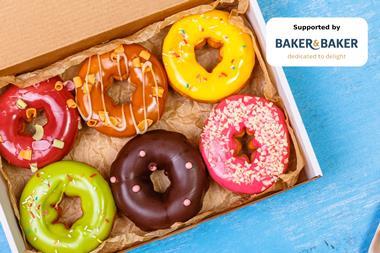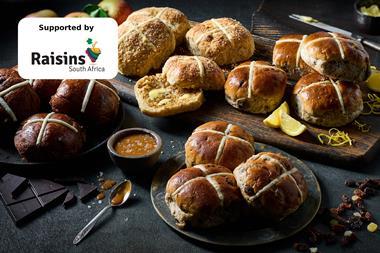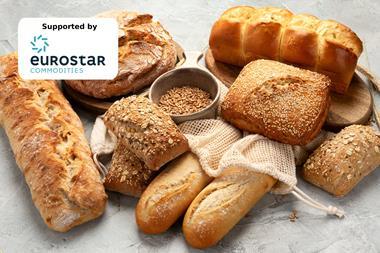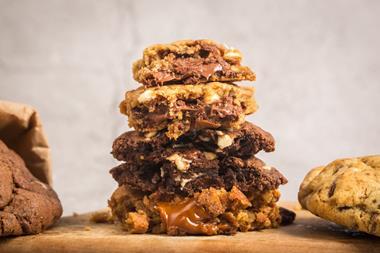Finding the balance between fully stocked shelves and minimal surplus is a difficult task, but technology can help.
When it comes to resource management, half measures won’t do. In fact, effective resource management – that careful balance between supply and demand – comes down to measuring.
“The key steps in working to minimise food waste and, importantly, the production of surplus in the first place that we suggest bakeries take are: measure surplus and waste; identify where and why in the process they arise; decide on solutions; and make a plan,” says Chris Young, coordinator at The Real Bread Campaign, which launched its No Loaf Lost guide in early 2018.
The good news for bakers is that there are technological solutions on the market that can help with this, ranging from simple, albeit labour-intensive, spreadsheets to plug-and-play EPoS-based systems and even artificial intelligence (AI).
Knowing when to make the switch from one to another can be tricky, particularly as some bakers may be hesitant about allowing a computer to make key production decisions.
“Bakery software can use EPoS-based sales data to predict what bakers need to produce and should be a standard tool for retail bakeries,” says Jane Tyler, MD of Cybake supplier RedBlack Software.
Citing conservative estimates of a 3-4% increase in sales and 10-15% reduction in waste, a quick return on investment, as well as admin cost savings, Tyler believes a basic system using EPoS data is a “no brainer”. “You’re not handing over control, you’re increasing control massively,” she adds. “It is giving you control over your forecasting.”
This is particularly true if the bakery in question produces fresh products for wholesale clients or retail, as they have to predict what their customers want, and start production, before orders are in. Standing orders are a basic part of this.
“Retail craft bakeries and in-store bakeries are fully exposed to the vagaries of consumer demand,” she adds. Even more so if they are producing sandwiches and savouries on-site, which add another element of surplus. Wholesale clients, meanwhile, handle theirs.
Paul Staples, co-founder of AI start-up CatsAI, says the system can be used as a “sanity check” for bakers or even to help bridge the knowledge gap between generations. But while CatsAI’s system works in collaboration with EPoS data, it also considers other external factors such as the weather, school holidays and roadworks.
But generating accurate production data through the use of AI requires a significant amount of sales data to begin with, meaning the technology isn’t suitable for start-ups.
Explaining when bakeries should utilise AI, Staples says: “Firstly, when they have a few years of trading under their belts, secondly when they have an EPoS system – it won’t work without one – and finally, when they want some comfort in their business to know that they are doing the right thing. Even though sales numbers may be going up, waste numbers may also be creeping up.”
However, technology has its limits. Experimental, limited-edition or low- volume products can be harder to predict. Christmas and Easter, Staples notes, can also be a “nightmare” to forecast, due to the variations in trends – what’s popular one year may not be the next.
The rest of the time, the key to success is a management-led approach to the integration of the chosen technology or production management schedule. The Real Bread Campaign’s Young believes this is a core element in reducing surplus but also recommends continually reviewing and refining any action taken to address this.
Making waste work for you
Waste might not be sexy, but it can be an effective marketing tool. Or rather, the absence of waste can.
Take Gail’s, for example. The bakery chain garnered national media attention last year when it rolled out Wasteless Sourdough – a loaf made using surplus bread. Tesco also enjoyed attention following the roll-out of its bread pudding and crostini earlier this year (see opposite).
Putting surplus to good use can be great for publicity – or even as a nice post to share with followers on social media – but Chris Young, coordinator at The Real Bread Campaign, believes empty shelves also have a part to play in positive promotion.
“A good bakery isn’t one where the shelves are still full at the end of the day, it’s one with little to nothing left. After all, it shows the products are so tasty, they’ve been snapped up sharpish by customers eager to support a responsible business that’s busy feeding bellies, not bins,” he says.
Selling out of a product can be used as a positive marketing tool, he adds, as long as it’s communicated effectively to customers. For example, it shows the products are popular and of high quality and that the business is fighting food waste. What’s more, it could even encourage customers to come in earlier (or, better still, order in advance).
Putting surplus to good use
Tesco Bread Pudding
Taking a stand against food waste, Tesco used surplus in-store bakery baguettes to create bread pudding. They are broken down into crumbs, mixed with spices, sultanas and water, then baked and sold at an rsp of £1.25 a slice.
Gail’s Wasteless Sourdough
Gail’s utilises its surplus loaves by using them to create Wasteless Sourdough. The loaves’ surplus is turned into a porridge, which is then added back to the dough. Gail’s describes the bread as having a tacky, textured crumb that sits beneath a thick crust.
National Bakery School ale
Celebrating its 125th birthday, London’s National Bakery School teamed up with Southwark-based breweries Toast Ale and Orbit Beers to create a beer made from surplus bread, left over after a student competition this year.
WJFG Christmas stuffing
Graduate trainees at William Jackson Food Group (WJFG) used surplus Jackson’s bread last year to create festive stuffing in two flavours – Christmas Cranberry and Classic Sage & Onion. Sold to staff at the firm, all proceeds went to food redistribution charity Fareshare.














































No comments yet